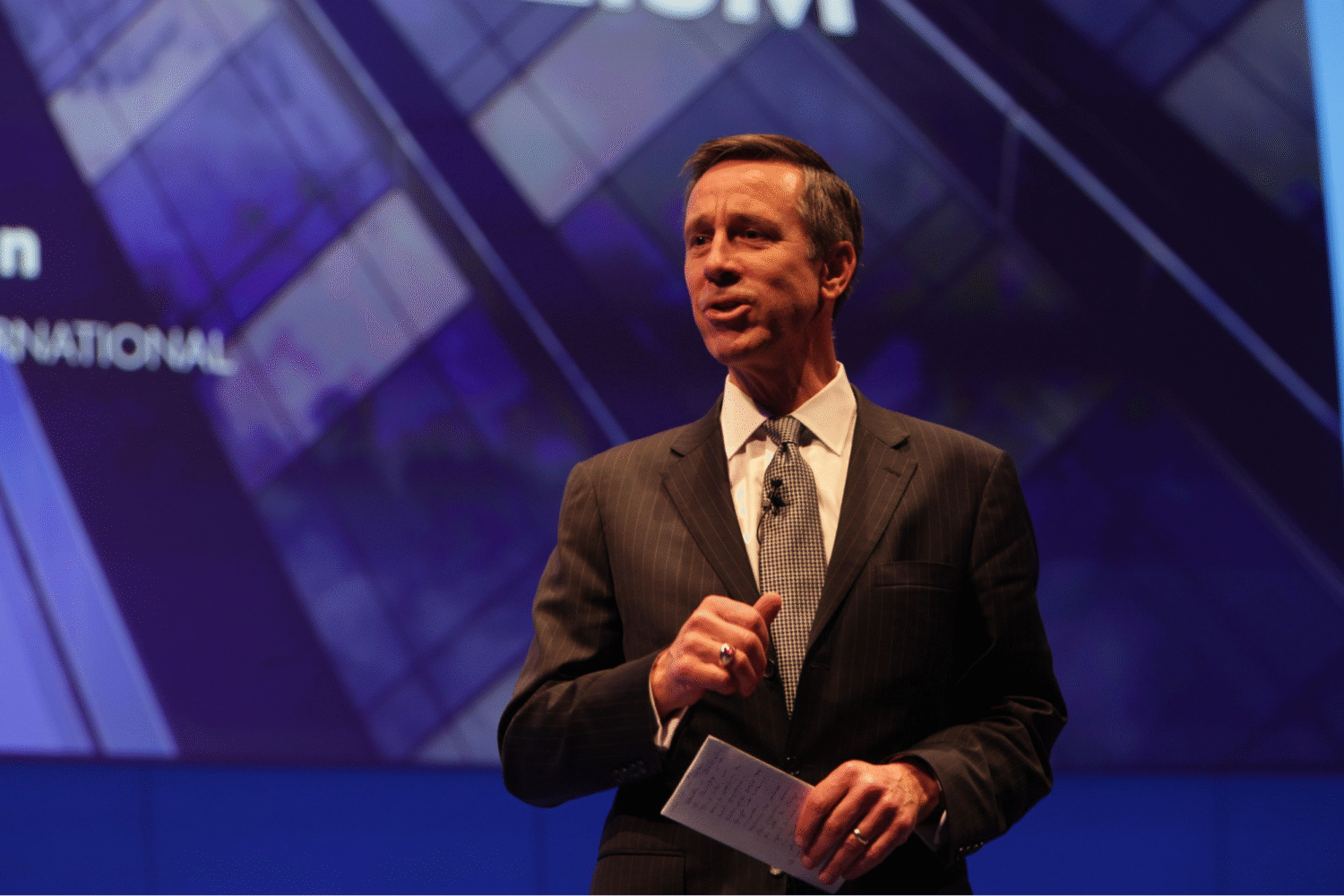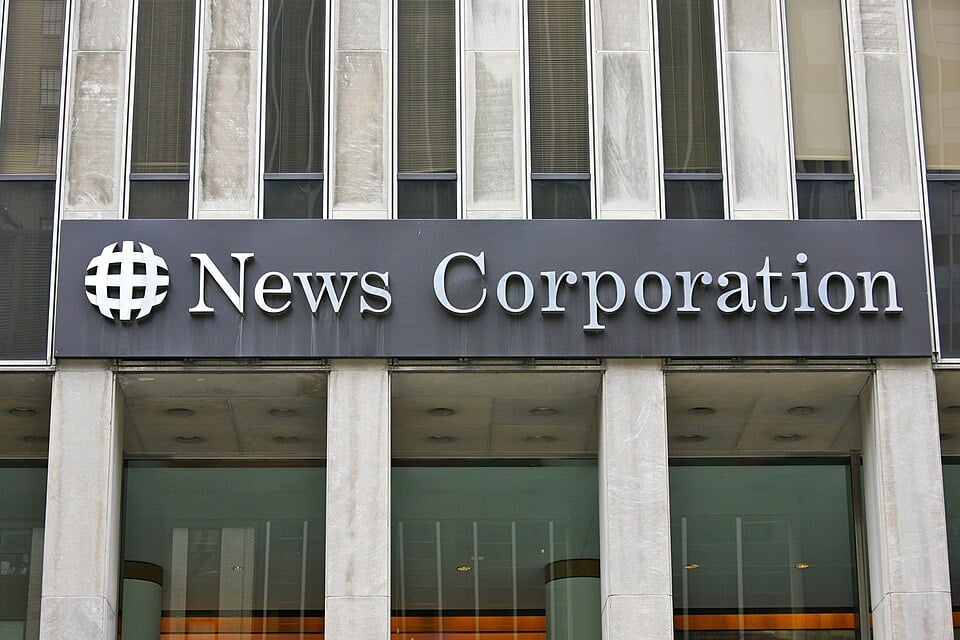The Role of Thought Leadership in PR (And Why It Matters)

In 2020, the COVID pandemic hit global hotel chain Marriott especially hard. But they had a secret weapon in their PR arsenal: thought leadership.
Arne Sorenson, then-CEO of the global hotel chain, leaned heavily into thought leadership by sitting down for media interviews, posting thought leadership content on LinkedIn, and speaking at virtual conferences.
In these engagements, Sorenson’s efforts generated positive press for Marriott, serving as an example of how a CEO thought leadership can boost PR results.
… thought leadership is too often overlooked as a PR tactic. In reality, it’s a secret weapon — one that’s more important than ever in the AI era, when cutting through marketing and PR noise has become more difficult …
What is thought leadership in PR?
PR, or public relations, encompasses all the levers an organization uses to influence its public perception. Thought leadership — strategically sharing insights and knowledge about an area of expertise — represents one crucial PR tool. By sharing valuable advice, ideas and POVs, company leaders can increase brand awareness while influencing public opinion.
Core components of PR
Within PR, thought leadership is just one piece of a larger puzzle that includes these core components:
1. Media relations
Media relations involves building and maintaining relationships with journalists and editors. By crafting compelling pitches and earning organic coverage, brands can secure placements in trusted publications to positively and proactively shape the way they’re perceived.
2. Product and company announcements
Issuing press releases and managing communications around things like product launches, new partnerships, and funding rounds has long been the bread and butter of PR. These announcements help generate buzz and attract interest, potentially leading to organic earned media coverage.
3. Crisis communications and public affairs
As executives know too well, it’s only a matter of time before a crisis materializes. This is part of PR where the stakes are highest. When bad news hits the wires, companies need to prioritize crisis communications and public affairs management to assuage the public, regulators, and other stakeholders and preserve their reputations.
4. Internal communications
While most folks think about PR as an external function, internal communications are equally important, particularly at larger organizations. For example, Amazon recently announced its intentions to automate as much as 75% of its operations by 2033. When the news broke, PR teams no doubt had messaging in place to keep employees calm, motivated, and engaged.
5. Thought leadership
Thought leadership is the practice of sharing original ideas to position an executive as an industry expert, establishing credibility and building trust. By ditching sales and marketing messages and delivering value to audiences through articles, social media posts, and media appearances that share unique insights, thought leadership lets executives educate audiences on industry and leadership themes.
While thought leadership may dispense with the proverbial “hard sell,” it can have a much bigger impact than traditional sales and marketing efforts. In fact, the 2024 Edelman–LinkedIn B2B Thought Leadership Study reveals that 73% of B2B buyers find thought leadership content more persuasive than marketing collateral.
Why? Because buyers ultimately do business with people, not faceless brands. By putting a human voice and face front and center, thought leadership helps create a sense of authenticity that resonates more deeply with audiences.
In our experience, thought leadership is too often overlooked as a PR tactic. In reality, it’s a secret weapon — one that’s more important than ever in the AI era, when cutting through marketing and PR noise has become more difficult and a human face and voice can make all the difference.
Why thought leadership is important in public relations
Thought leadership plays a central role in effective PR. Establishing executives as thought leaders means they’re better positioned to influence public perception and meaningfully engage with key audiences. Let’s dig a little deeper into why you need to incorporate thought leadership into your overall PR strategy.
Build credibility
Thought leadership builds credibility by positioning leaders, and by extension their companies, as knowledgeable experts who possess a deep understanding of the challenges and issues impacting their industries. The halo effect of a trusted leader naturally extends to the brand itself. Much of Virgin’s brand equity, for instance, rests in the credibility that founder Richard Branson has cultivated through his thought leadership initiatives.
Create media opportunities
The more thought leadership content you publish, the wider your audience becomes. It’s only a matter of time before industry journalists and influencers begin seeing it pop up in their feeds, which can lead to a host of opportunities, including podcast invites, byline placements, media hits, and speaking engagements.
Raise brand awareness
Thought leadership raises brand awareness by spreading messages across channels, including industry publications, social media, and company blogs, to increase visibility. Unlike sales and marketing messages, thought leadership gives audiences something valuable to engage with that isn’t promotional, which puts brands right in the middle of important industry conversations.
Since 64% of decision-makers spend over an hour each week reading thought leadership content, brand awareness increases among the exact audience you’re hoping to engage.
Influence industry narratives
By taking a stand and leading on key issues, thought leadership allows your brand to shape the most important narratives in your industry. Thought leadership lets you set the pace for your sector and differentiate your business from competitors.
Nvidia founder Jensen Huang, for instance, has used his thought leadership efforts in media interviews and conference appearances to position AI as a force for improved productivity and job creation. This has enabled Nvidia to dampen counternarratives that paint AI as societally disruptive and destructive of jobs.
It’s not surprising that the ROI of thought leadership is tremendous: A recent study from The Harris Poll found that thought leadership investments deliver a 14x ROI.

How to integrate thought leadership into your PR strategy
Follow these steps to bake thought leadership into the foundation of your PR engine.
1. Choose your thought leaders
Start by identifying the executives and subject-matter experts (SMEs) who have unique insights, strong communication skills, and a willingness to share. For startups, it’s best to stick with one thought leader, likely the founder; after all, building a brand from the ground up is no small challenge. For enterprises, pick different thought leaders for different domains (e.g., a CEO, CTO, and CMO).
2. Define their thought leadership brand and strategy
What will your thought leaders stand for? What are their goals? Once you’ve answered these questions, pick channels (e.g., LinkedIn and industry publications) and make sure that your goals align with overarching PR goals and campaigns.
3. Create consistent content that adds value
Remember, thought leadership isn’t about making direct sales pitches. It’s about adding value on a regular basis and using multiple channels to spread the word. In addition to publishing thought leadership content on social channels, you’ll also want to secure bylines in industry publications. This is an area where a thought leadership agency can be especially helpful.
4. Engage with audiences and build community
Thought leadership isn’t a one-way street. As you develop your thought leadership program, engage with your audience by responding to their comments and liking and sharing content you see on their channels.
5. Track, evaluate, and adapt
Continuously improve the impact of your thought leadership efforts by measuring metrics like media placements, social engagement, and share of voice to see how your content is being received. Using that information, you can determine which types of content are most effective at driving your PR goals forward and adjust your strategy accordingly.
Examples of thought leadership in PR
To give you a better idea of how thought leadership can buttress PR strategy, let’s examine a couple real-world examples.
Ken Ohashi, CEO of Brooks Brothers

After taking the reins of Brooks Brothers two months after it filed for bankruptcy during COVID, Ken Ohashi reinvigorated the 200-year-old brand, which did nearly $1 billion in revenue in 2023. By embracing public storytelling and investing in thought leadership as part of a larger PR push, Ohashi brought renewed credibility and relevance to the fashion company.
Robert Thompson, CEO of News Corp

Media outlets need great PR, too! News Corp CEO Robert Thomson has done his part lately by sharing thought leadership around the impact of AI. He recently waded into tumultuous waters by criticizing AI companies for investing in chips and data centers — not original content. This speaks to to the core values of his organization — creating unique content — while aligning with larger PR efforts highlighting the power of original news reporting.
Get started with thought leadership today
Thought leadership can strengthen your PR efforts, establishing executives as highly credible and authentic go-to industry sources who can boost key company narratives.
But building an impactful thought leadership strategy takes time, effort, and skill — which is why many executives opt to partner with external agencies that excel at thought leadership.
Learn about ways to get started on your journey as a thought leader.
Curious How Your Personal Brand as a CEO or Executive Impacts Your Business?
We specialize in helping executives put their best foot forward. If you’d like to see how effective your executive brand is at driving results, share your email address, and we’ll send you an Executive Brand Report Card self-assessment like this.



